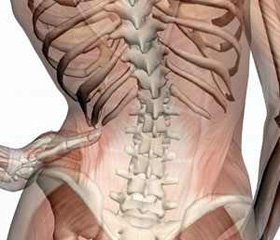Журнал «Боль. Суставы. Позвоночник» 1 (09) 2013
Вернуться к номеру
Bone Structure Assessed by TBS Measured by DXA Reflects Trabecular Microarchitecture Analyzed by µCt in Bone Biopsies of Females with Fragility Fractures Clinical proof of a concept
Авторы: Angela Trubrich1, Christian Muschitz1, Roland Kocijan1, Judith Haschka1, Afrodite Zendeli1, Thomas Gross2, Didier Hans3, Heinrich Resch1, 1 The VINFORCE Study Group — St. Vincent Hospital — Medical Department II, Austria, Vienna, 2 Center of Bone Diseases, Lausanne University Hospital Switzerland, Lausanne, Switzerland, 3 Institute of Lightweight Design and Structural Biomechanics, Vienna University of Technology, Vienna, Austria
Рубрики: Ревматология, Травматология и ортопедия
Разделы: Медицинские форумы
Версия для печати
Тезисы докладов Международной школы-семинара «Остеопороз в травматологии и ортопедии»
4–8 февраля 2013 года, г. Яремче, Украина
Background. Biomechanical competence of bone is only partly explained by bone mass. Apart from material properties, microarchitecture is an important determinant of bone strength, which is assessed by invasive methods like transiliac biopsies. Alternatively Trabecular Bone Score (TBS) is a novel greyscale textural analysis to estimate trabecular structure from the AP Spine DXA. TBS correlates well with more direct measures of bone microarchitecture independent of BMD (Hans JCD 2011) in human cadaver vertebrae. The aim of this retrospective case control study is to evaluate correlations between TBS and the microarchitectural parameters of transiliac bone biopsies in females with fragility fractures to proof the clinical potency and efficacy in bone quality assessment to improve fracture risk assessment.
Patients and methods: In this retrospective study we evaluated structural characteristics by microtomographic imaging system (µCT40, Scanco, Switzerland) in transiliac bone biopsies of 12 females of similar age between 33 and 61 years having sustained fragility fractures but otherwise healthy. The measured parameters were as follows: bone volume/total volume (BV/TV); trabecular thickness (TbTh expressed in mm); TbSp (expressed in mm); TbN (expressed in mm–1); and ConnD (expressed in mm–3). Furthermore AP spine was assessed by DXA (QDR 4500, Hologic Inc, USA), and sitematched spine TBS parameters were extracted from the DXA image using TBS iNsight software (v1.9, Medimaps SA, France).
Results. Laboratory tests did not reveal any evidence of metabolic disorder in any of our subjects. BMD values ranged from 0.650 to 1.301 g/cm2 and TBS varied from 1,004 to 1,467. The BMI ranged from 18.5 to 30.8 with a mean value of 22.8 and was correlated to TBS, BV/TV, TbSp and TbN and TBS. Following correlations between TBS and 3D parameters were identified: r = 0.69 (p = 0.01) between TBS and BV/TV; r = –0.744 (p = 0.005) between TBS and TbSp; r = 0.673 (p = 0.017) between TBS and TbN. No correlations were found between TBS and ConnD.
Conclusions. Our results in younger individuals with fragility fractures showed highly significant correlations between 3D structural parameters assessed by mCt in transiliac bone biopsies and TBS. The relationship between TBS and microarchitectural parameters was indicative that a low TBS showed weak microarchitecture related to low TbN, and high TbSp as well as low BV/TV. Our data proof that TBS seems to be a reliable tool showing the structural patterns on tissue level in transiliac bone biopsies.

